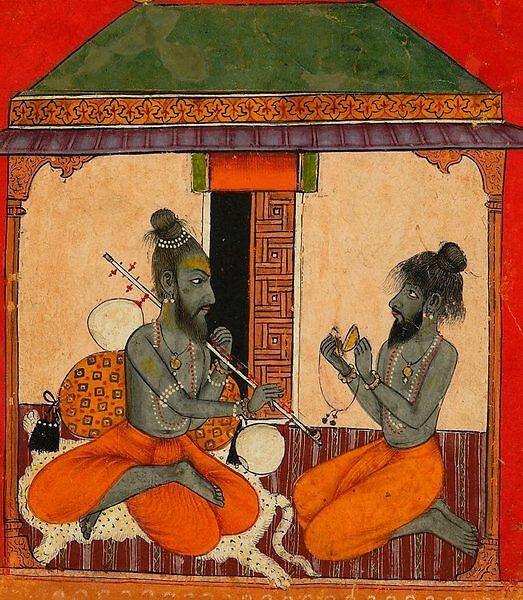"Acoustics of Indian Musical Instruments: Historical and Scientific Perspectives"

Date
Description
Dear All,
Mathematical Soft Matter Unit (Fried Unit) would like to invite you to a Seminar by Prof. Anurag Gupta from Indian Institute of Technology Kanpur, India.
Date: Wednesday, March 1st, 2017
Time: 15:00-16:00
Venue: C209, Level C, Center building
Speaker:
Professor Anurag Gupta
Department of Mechanical Engineering
Indian Institute of Technology Kanpur, India
Title:
Acoustics of Indian Musical Instruments: Historical and Scientific Perspectives
Abstract:
A historical and scientific study of Indian musical instruments offers several novel avenues of research in ethnomusicology, vibrations, and acoustics. In this presentation, we will talk about certain Indian instruments from the context of highlighting their unique design features, simultaneously discussing their archeology, and the challenges in the modelling of these instruments. The nature of the talk would be interactive supported by rich multimedia including sound samples. As the occasion demands, we will also draw connections with a few Japanese musical instruments. A variety of plucked stringed instruments (which include tanpura, sitar, surbahar, rudravina) maintain their unique identity due to a curved bridge, round (gourd) resonator, juari (cotton thread running orthogonal to the string on the bridge), sympathetic strings, and a rounded fingerboard. We will emphasize the acoustical importance of these features, while also presenting their historical development. We will also present some recent experimental and modelling work in this direction. Indian membranophones (drums) are unique in the world for their musicality and richness of sound. Drums are otherwise mostly associated as time keeping and beat instruments. In this context, we will discuss two classes of Indian drums. One for which rich harmonic overtones are generated by making the membrane inhomogeneous (tabla, pakhawaj, mradangam), and other where there is a skillful variation of tension and a coupling with strings (idakka, damru). The latter are closely related to the Japanese tsuzumi. Again, we will discuss some of our efforts towards experiments and modeling of Indian drums.
皆様、
インド工科大学カンプール校よりアヌラグ・グプタ教授を招き、インド楽器を題材にセミナーをご提供いただきます。皆様お誘い合わせのうえ、ご参加ください。
日程: 2017年3月1日(水)
時間: 15:00-16:00
会場: OISTセンター棟、C階、C209
講演者:
インド工科大学カンプール校 機械工学部
アヌラグ・グプタ教授
アブストラクト:
インド楽器の歴史的・科学的研究は、民族音楽学、音の伝播に関するもの、そして音響学において、新しい世界へと導いてくれます。
今回のセミナーでは、そのインド楽器をとりあげ、ユニークな構造をハイライトしてご紹介し、それと同時に、考古学や楽器製作に関する話題を展開します。ここでは、マルチメディア機器を使用した音源サンプルと共に、対話型でお届けします。これらの話題からは、日本の楽器とのつながりも感じられることと思います。
タンプーラ、シタール、スルバハール、ルドラ・ヴィーナなどのいろいろな撥弦楽器は、カーブを帯びた胴部分、円形の(ふくべ製)共鳴器、ジュアリ(駒の弦に対し直角にある木綿糸)、共鳴弦、そして丸形の指板など特徴のある形状を受け継いでいます。これらの楽器が歴史的にどのように発展してきたのかを紹介しながら、各部分の機能の音響的な重要性にも焦点をあてます。
また、関連する分野における最近の実験やモデル化も併せてご紹介します。インドの膜鳴楽器(ドラム)は世界の中でも、その音楽的機能と豊かな音源という特徴から、とてもユニークな存在であります。またドラムは、時間や拍のリズムを取るという役割も持ち合わせています。セミナーでは、2種類のドラムをについてお話しします。1つは、ドラムの膜を使って、張力を変化させることで豊富な倍音を作り出すタブラ、パカーワジ、ムリダンガム。そして2つめは、張力と紐の締め具合で音程を巧みに生み出すイダッカやダムルです。後者は、日本の鼓(つづみ)と多くの部分でつながりのある楽器です。
このように、インドのドラム楽器類についての、私たちの実験とモデル化についてのセミナーへご招待したいと思います。
Attachments
Intra-Group Category
Subscribe to the OIST Calendar: Right-click to download, then open in your calendar application.



